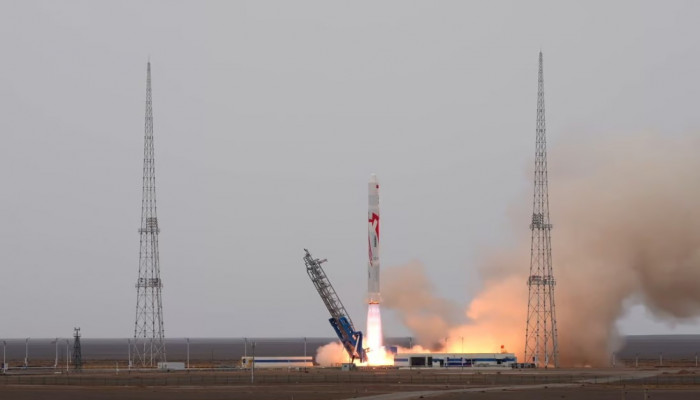China’s methane powered Landspace's Zhuque-2 rocket reaches sun-synchronous orbit
- In Reports
- 07:22 PM, Jul 12, 2023
- Myind Staff
As per reports, a Chinese private aerospace company, LandSpace, has emerged victorious in the race to launch a large rocket powered by methane and liquid oxygen. The LandSpace's Zhuque-2 rocket successfully took off from the Jiuquan Satellite Launch Centre in the Gobi desert. Notably, this groundbreaking launch resulted in the Zhuque-2 becoming the first rocket worldwide to achieve the delivery of a test payload into a sun-synchronous orbit (SSO).
Earlier this year, two other rockets powered by liquid oxygen methane, namely the Terran 1 from Relativity Space in the US and SpaceX's Starship, failed in their initial attempts to reach orbit. In contrast, the Zhuque-2's second launch attempt proved to be successful, following an unsuccessful launch on December 14.
The utilization of methane-powered engines, known for their superior performance and cost-effectiveness, aligns with the growing trend of reusable rockets. This technology is considered the leading design in the new era of rocketry. The accomplishment of the Zhuque-2 team further enhances the achievements of China's private aerospace sector this year, building upon the successful launch of Space Pioneer's liquid-propelled Tianlong-2 in April.
According to reports from China Space News, the Zhuque-2 is a two-stage liquid-propellant carrier rocket. With independently developed engines, it measures approximately 49.5 meters (162 feet) in length and has a diameter of 3.35 meters (10.9 feet). The rocket boasts a payload capacity of six tonnes for low Earth orbit and four tonnes for SSO, as per the same source.
“The first stage of the rocket utilises four Tianque-12 [TQ-12] liquid oxygen methane engines, achieving a thrust of 268 tonnes. The second stage combines one Tianque-12 and one Tianque-11 [TQ-11] engine,” the report said.
Testing of the TQ-12 engine started in July 2019 with the launch coming after four years of research and development by the company.
According to reports, during the early stages of liquid rocket development, kerosene and liquid hydrogen were commonly employed as fuel, as natural gas technology was still in its nascent phase. However, the remarkable quality of natural gas obtained from select high-grade fields has led to significant advancements. Presently, liquefied natural gas (LNG) can be directly utilized as rocket engine fuel without the need for additional purification, thanks to its superior properties.
The advantages offered by natural gas have garnered increasing attention and favorability among researchers. Its notable features include high combustion efficiency, environmental friendliness, cost-effectiveness, and ease of production. These factors have positioned natural gas as a preferred choice for propellant development.
When it comes to propellant performance, both liquid methane and traditional liquid kerosene possess distinctive strengths and weaknesses, as reported. The utilization of natural gas as a rocket engine fuel showcases the significant progress made in this field, providing an alternative and promising option for future space exploration endeavors.
Methane as a rocket fuel offers advantages such as higher theoretical specific impulse, easier engine maintenance, and reduced fuel tank weight, enhancing payload capacity and environmental friendliness.
According to the China Space News report, the compatibility of methane and liquid oxygen in terms of storage due to their similar boiling points is advantageous. LandSpace intends to replace the Zhuque-2's TQ-11 engine with the TQ-15A, an 80-tonne variable thrust liquid oxygen methane engine.
Additionally, an improved version of the TQ-12 engine, the TQ-12A, is currently being developed. These upgrades aim to enhance payload capacity, reduce costs, and cater to a wider range of launch requirements, aligning with future commercial space launch market needs.
“Meanwhile, China National Space Administration is also striving to advance the development of applicable liquid oxygen methane rocket engines,” the report said.
“Engines with thrust of 80 tonnes and 200 tonnes are being steadily tested and will become the preferred propulsion choice for China’s future medium to large rockets,” it added.
Image source: The South China Morningpost







Comments